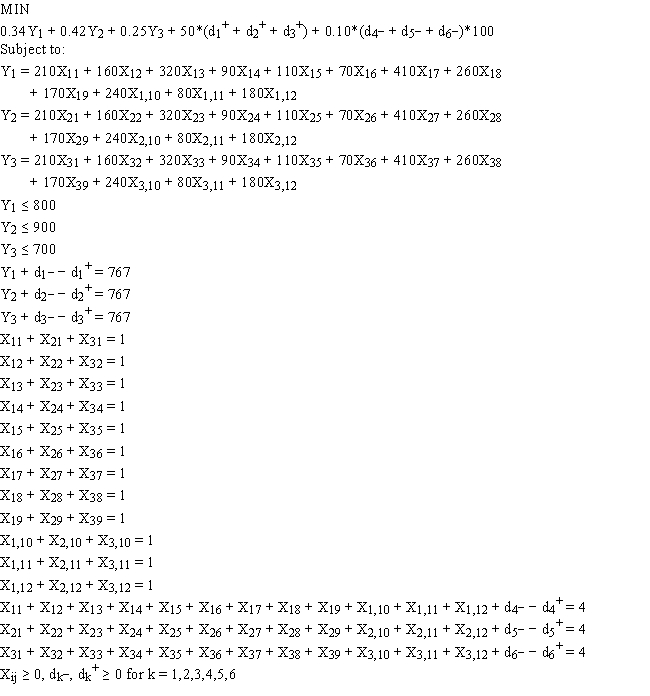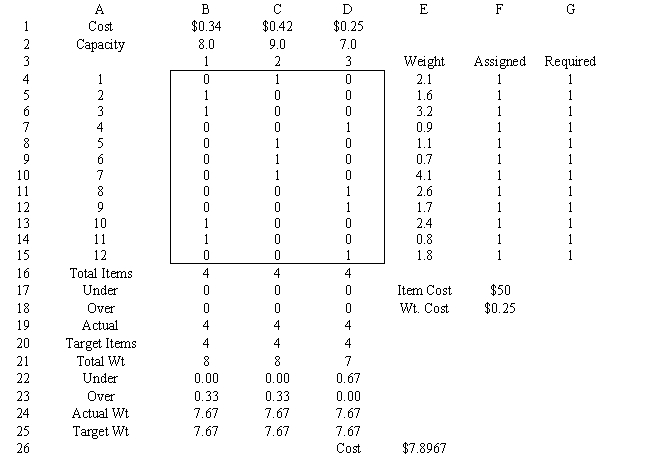Exhibit 7.4
The following questions are based on the problem below.
Robert Gardner runs a small, local-only delivery service. His fleet consists of three smaller panel trucks. He recently accepted a contract to deliver 12 shipping boxes of goods for delivery to 12 different customers. The box weights are: 210, 160, 320, 90, 110, 70, 410, 260, 170, 240, 80 and 180 for boxes 1 through 12, respectively. Since each truck differs each truck has different load capacities as given below:  Robert would like each truck equally loaded, both in terms of number of boxes and in terms of total weight, while minimizing his shipping costs. Assume a cost of $50 per item for trucks carrying extra boxes and $0.10 per pound cost for trucks carrying less weight.
Robert would like each truck equally loaded, both in terms of number of boxes and in terms of total weight, while minimizing his shipping costs. Assume a cost of $50 per item for trucks carrying extra boxes and $0.10 per pound cost for trucks carrying less weight.
The following integer goal programming formulation applies to his problem.
Y1 = weight loaded in truck 1; Y2 = weight loaded in truck 2; Y3 = weight loaded in truck 3;
Xi,j = 0 if truck i not loaded with box j; 1 if truck i loaded with box j.  Given the following spreadsheet solution of this integer goal programming formulation, answer the following questions.
Given the following spreadsheet solution of this integer goal programming formulation, answer the following questions. 
-Refer to Exhibit 7.4. The spreadsheet model has scaled all the weights from pounds into 100s pounds. How does this scaling effect the solution obtained using the Analytic Solver Platform (ASP)?
Definitions:
Q5: A company wants to purchase large and
Q6: Refer to Exhibit 11.8. What formula should
Q25: Given an objective function value of 150
Q27: The main difference between linear (LP) and
Q30: Why does the GRG algorithm not provide
Q31: Using the information in Exhibit 12.1, what
Q44: You have been given the following linear
Q81: Which of the following is an advantage
Q81: The "Objective Value of" option in the
Q123: If using the regression tool for two-group